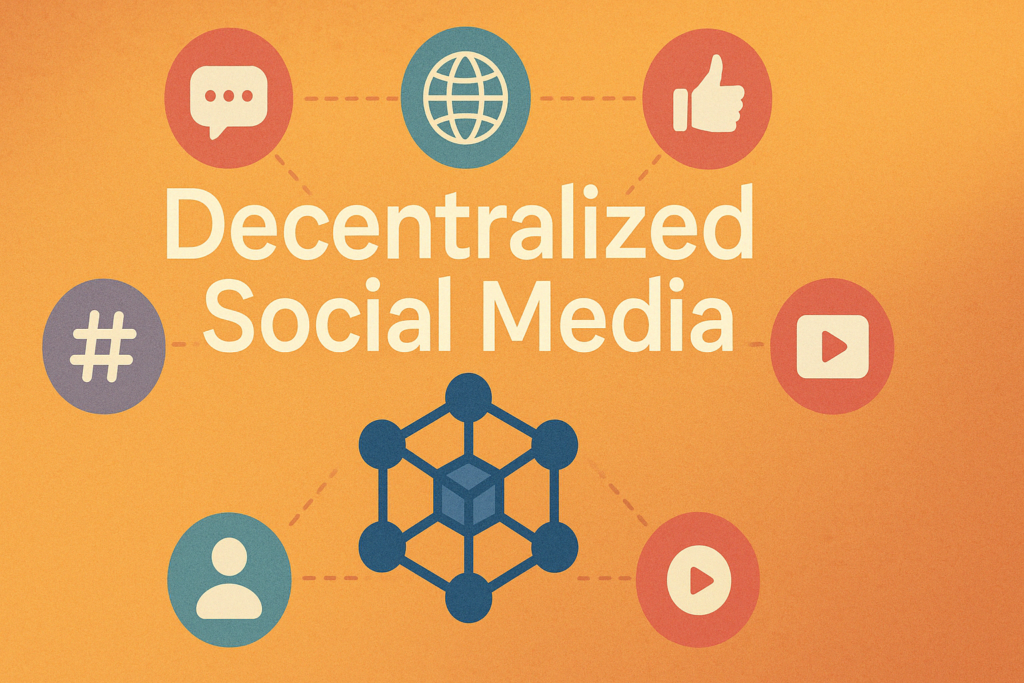Let’s be honest: traditional social media is starting to feel like that clingy ex who won’t stop watching your every move, sells your secrets, and occasionally gaslights you about what you saw on your own feed. In other words, we’re over it. Enter: decentralized social media platforms—the cooler, privacy-loving cousin of Facebook and X (formerly Twitter) that’s rewriting the rules of the internet. These platforms aren’t just a tech trend—they’re a digital uprising powered by Web3, blockchain media, and a growing demand for digital freedom.
What Exactly Is a Decentralized Social Media Platform?
Imagine a social network where no single company owns your data. No algorithm quietly decides what you see. No creepy targeted ads that follow you from app to app like a lost puppy. That’s decentralized social media.
These platforms are built on blockchain technology, which means data isn’t stored in one big corporate-owned server. Instead, it’s spread across a network of nodes—computers owned by users themselves. You get transparency, security, and control. And most importantly, your posts belong to you, not some CEO in a hoodie.
Web3: The Internet’s Midlife Crisis or Its Glorious Rebirth?
Web3 isn’t just a buzzword—it’s the movement powering this change. While Web2 gave us interactive websites and social media, it also locked us into platforms that profit from our personal data. Web3 flips the script.
With decentralized identities, crypto wallets, and token economies, Web3 is creating an ecosystem where users are participants, not products. It’s the tech foundation behind this new wave of social platforms like Mastodon, Farcaster, and Lens Protocol. These aren’t just apps—they’re permissionless networks. Want to build your own feed reader or social app using the same data? Go for it. No lawsuits pending.
The Blockchain Media Shake-Up
Here’s where things get spicy. Blockchain media—news, posts, videos, and comments stored on-chain—means that once you publish something, it can’t be secretly altered or quietly deleted. There’s a permanent record. Great for transparency, maybe a little terrifying for your embarrassing hot takes.
But in an era of content manipulation, deepfakes, and media censorship, blockchain-backed content offers something rare: trust. It’s like the “pics or it didn’t happen” of the internet, but verified by code.
Why Now? Because People Are Done
We’ve hit peak frustration with legacy social media. Algorithmic manipulation? Check. Data breaches? Check. Censorship ping-pong? Double check.
Decentralized platforms are rising because users want digital freedom. They want to own their voice, connect without gatekeepers, and build communities that aren’t one policy change away from imploding.
You’re also seeing creators flock to these platforms because they can monetize without middlemen. Imagine earning tokens for your posts that actually have value. It’s the kind of creator economy Web2 promised but never delivered.
The Trade-Offs: Not All Rainbows and Revolutions
Let’s not sugarcoat it: decentralized social media is still the wild west. UX can be clunky, onboarding isn’t grandma-friendly, and moderation is… complicated. With no central authority, communities often self-police. That can be a strength or a chaotic mess.
Also, not everyone’s thrilled about immutable content. What happens if you want to delete a post? Or if something harmful goes viral and lives on-chain forever? These are real challenges the space is still figuring out.
So… Should You Ditch Instagram Yet?
Not necessarily. Decentralized platforms aren’t here to replace the giants—yet. They’re offering an alternative. A choice. A rebellion, if you’re into that kind of thing.
And they’re only going to get better. Better design, better communities, better onboarding. Right now, being part of this movement is like joining the early internet. It’s weird, exciting, imperfect—and full of potential.
Final Scroll
Decentralized social media is more than a passing phase. It’s a response to broken systems, and it’s giving power back to the people who should’ve had it all along—us. Backed by blockchain media, built on Web3, and fueled by the demand for digital freedom, this new wave of platforms is rewriting the rules of online connection.
Whether you’re ready to go full-on crypto-social or just curious about what a Twitter-less life could look like, one thing’s for sure: the future of social media is no longer centralized—and it’s finally getting interesting.


